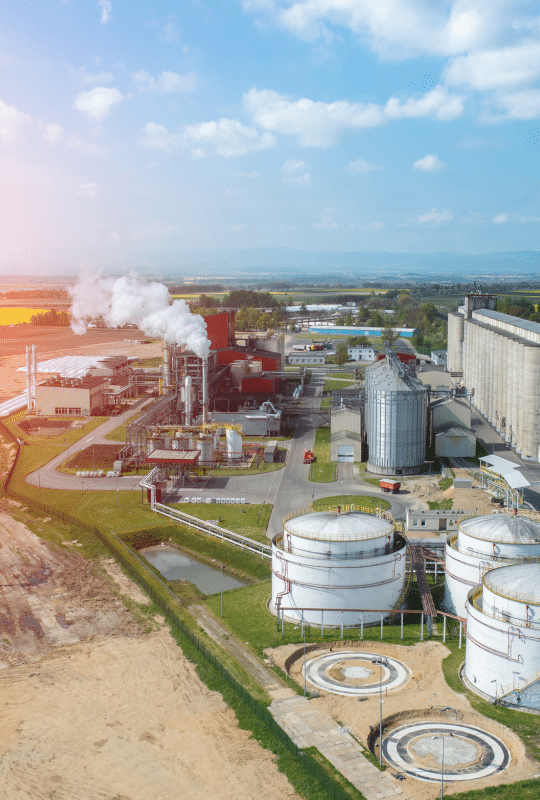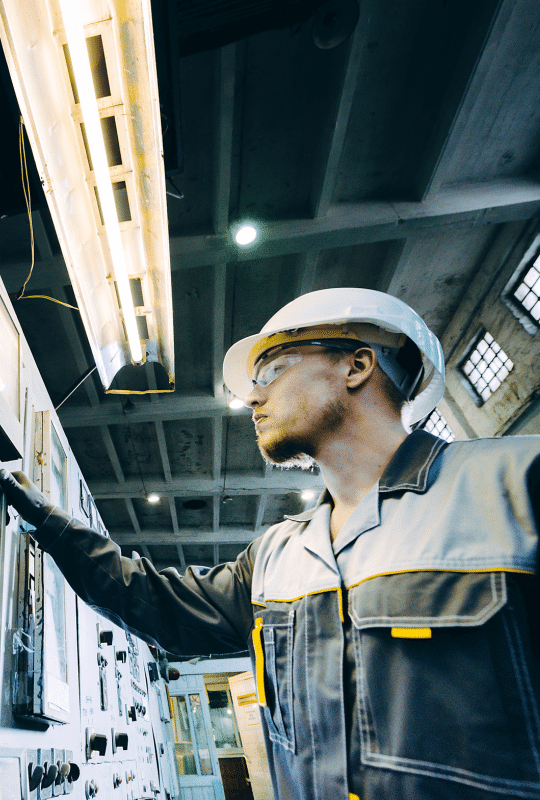THERMAL POWER
A thermal power plant is a type of power generation facility that converts heat energy into electricity. This is done by using heat from a fuel source, such as coal, natural gas, or biomass, to generate steam, which then drives a turbine that generates electricity.
The process in a thermal power plant begins with the combustion of a fuel source, such as coal, in a boiler. The heat from the combustion process is used to generate steam, which is then piped to a turbine. The turbine is connected to a generator, and as the steam flows through the turbine, it causes the turbine blades to spin, which in turn causes the generator to produce electricity. The steam is then cooled and condensed back into the water, which is then returned to the boiler to be heated again. This process is known as a Rankine cycle.
Thermal power plants are one of the most common types of power generation facilities in the world, and they can be found in many different forms, including coal-fired power plants, natural gas-fired power plants, and biomass-fired power plants. Thermal power plants can be either large-scale, utility-scale facilities that provide electricity to the grid, or they can be smaller, distributed facilities that provide power to a specific facility or community.
The heat energy is obtained from the combustion of solid fuel which is coal. It is used to transform water into steam form. The steam is created at high pressure and temperature. This steam is then used for the rotation of turbine blades. Turbine shafts are connected to the generator. This generator converts the kinetic energy into electric energy through the turbine impeller.
THERMODYNE SYSTEMS
Boiler manufacturing is one of the biggest experiences of Thermodyne Engineering Systems. It creates high-pressure and temperature steam that is needed for the rotation of the turbine and for generating electricity.
Thermodyne systems also have turnkey boiler plant projects. Other projects include the installation and commissioning of the boiler.
COMPONENTS OF POWER PLANT
Thermal power plants comprise a whole different step for generating electricity. Here are some of the steps or main components of a thermal power plant:
- The trains are used to transport fuel from mines to the fuel storage facility in a power plant. The fuel is of the biggest in particle size before it is fed to the boiler furnace. In the furnace, it is broken down into smaller pieces with the help of crushers. This fuel is then poured inside the boiler which produces a large amount of combustion heat.
- Then the treated water is free from impurities and the air is then poured into the boiler drum where the combustion heat is created. It then helps to transfer the water to convert it into high-pressure and temperature steam. The fuel gases from the boiler should be utilized. If it’s not used then there will be a large number of losses resulting in reduced boiler efficiencies.
- Preheat water or heating air needed for combustion are two ways to recover the waste heat. After this whole process, the fuel gases are then allowed to pass through a collector called a dust collector or called a bag filter. This step prevents the environment from air pollution, after this, it is passed on through a chimney.
FUEL STORAGE & HANDLING
The most important part is the storage and handling of the fuel. It enables the thermal power plant to operate smoothly on casual days and when the fuel supply is not regular.
The first step of the power generation process is that with the help of a belt conveyor, the fuel is brought to the breaker house. In this step, the light dust is separated by a rotary machine through gravity. Then it goes to the crusher where it is crushed to 50mm size approximately.
WATER TREATMENT PLANT
Plant water is used in large quantities which are converted into steam and enable the rotation of the turbine. The water and steam are directly in contact with the boiler, boiler tubes, and other accessories.
Untreated, normal water is taken from the river. It contains a lot of dirt, suspended particulate matter, minerals, other dissolved gases, etc.
In case the water is not treated then it will reduce the efficiency of the equipment. If the water poured into the boiler is not treated. Then it will reduce the life and efficiency of equipment by damaging the surfaces and equipment scaling which may lead to overheating of pressure parts.
Adding alum into the water tank can remove the suspended matter from the water. Due to the increase in density, the alum settles down at the bottom of the tank through gravity.
After the gravity is separated, the next step is the ion exchange process that helps to soften the water. The hardness also comes in form of carbonates and bicarbonates of sodium and magnesium, the salt is removed through this ion exchange process.
Water contains oxygen that is dissolved. And it can be resultant in corrosion and fouling of boiler tubes whenever it comes into their contact. The addition of scavengers and using a deaerator tank can enable the removal of dissolved oxygen.
The deaerator tank acts as a water tank to store the feed water. The heating of feed water decreases the solubility of air in water. It results in the removal of dissolved air from the water.
Thermodyne supplies the water softeners and deaerator tanks to improve the feed water to boiler quality. It also improves the life of the boiler and its efficiency.
STEAM BOILER & TURBINE
The boiler is used to generate high-pressure steam at a condition of saturated temperature. A boiler is a pressure vessel. Bi-drum water tube boilers are the type of boilers used at high pressure and temperature. Water tube boilers are manufactured by Thermodyne Engineering Systems. They create it in different sizes and capacities. That can be operated on different fuel types.
A furnace is attached to the water tube boiler by a water tube membrane. Then the crushed fuel is fed into this boiler furnace
The combustion of fuel is caused due to the mixing of hot air from the FD fan. Radiation heat is generated through combustion which is then transferred to the water through membrane tubes. The fuel gases travel at high velocity and as it is created through combustion.
It results in the heating of water through convection heat transfer. The feed water pump is then used to send the hot water into the boiler drum at high pressure.
Turbine
It is a mechanical device. That converts the pressure energy of steam into useful work or operation. The superheater steam goes to the turbine where it usually expands. And loses its pressure energy and rotates the turbine blade. That rotates the turbine shaft that is connected to the blades. The shaft then rotates the generator which converts this kinetic or pressure energy into electrical energy.
IMPORTANCE
A thermal power plant is an important and complex system that plays a vital role in providing electricity for our modern world. The process of generating electricity from thermal power involves several steps, including fuel combustion, steam generation, and energy conversion. It is important to note that thermal power plants have a significant impact on the environment, and efforts should be made to reduce their emissions and improve their overall efficiency. By understanding the basic principles and components of a thermal power plant, we can better appreciate the complexity and importance of this technology in our daily lives.




